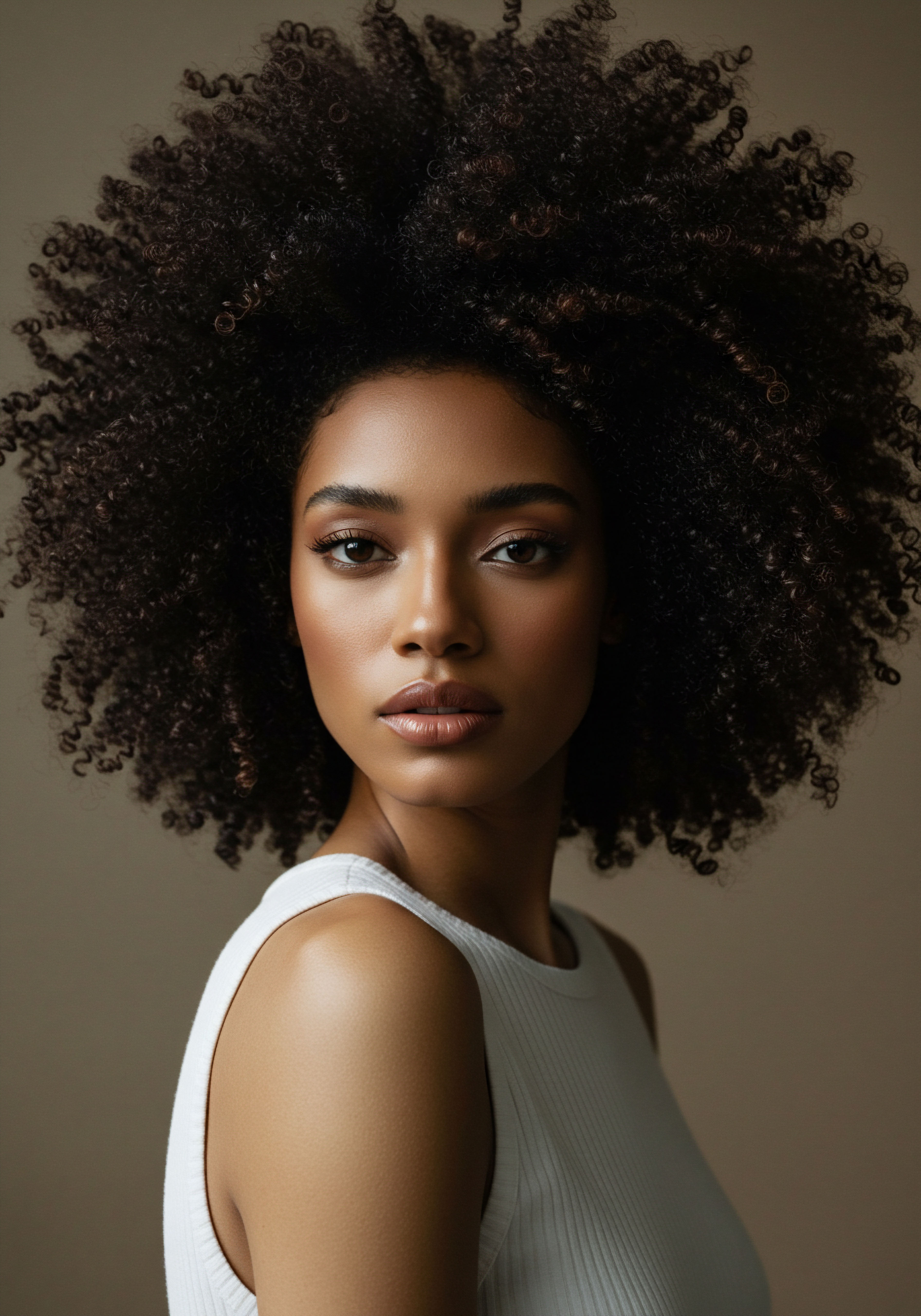
Roots
The whisper of ancient winds across the Nile carries tales not just of pharaohs and pyramids, but of a profound relationship with personal adornment, particularly hair. For the people of Kemet, as they called their land, hair was far more than mere biological growth; it held deep meaning, a visible expression of identity, cleanliness, and place within society. The careful cultivation of appearance was a daily practice, reflecting a sophisticated understanding of self-presentation that spanned all social strata. It was in this sun-drenched landscape that the wig, a remarkable innovation, found its earliest and most widespread adoption.
From the dawn of their civilization, ancient Egyptians embraced wigs as a cornerstone of their daily existence. These crafted headpieces served multiple purposes, extending beyond simple aesthetics. In a climate where intense sun beat down relentlessly and the threat of parasitic infestations loomed, maintaining natural hair could be a constant challenge. Shaving or closely cropping one’s own hair offered a practical solution, promoting a level of personal hygiene that was highly valued.
Upon this clean canvas, the wig offered both protection from the sun’s glare and a shield against unwanted visitors, such as head lice. This pragmatic approach to hair care laid the groundwork for the wig’s societal acceptance, transforming it from a simple covering into a statement of care and consciousness.
Ancient Egyptian wigs were fundamental to daily life, serving as symbols of identity, hygiene, and social standing.

Foundational Materials and Craft
The artistry behind ancient Egyptian wigs was considerable, relying on a palette of available materials. The most esteemed and, consequently, the most costly wigs were fashioned from human hair. This precious commodity was meticulously prepared, cleaned, and often dyed a deep, lustrous black, though lighter shades were also known.
For those of lesser means, ingenuity found its way into construction, with wigs crafted from vegetable fibers, such as palm leaf, or even sheep’s wool. These diverse materials underscore the widespread desire for wigs across the social spectrum, adapting to economic realities while upholding the cultural standard of appearance.
The construction process itself speaks to the skill of ancient Egyptian artisans. Hair strands, whether human or plant-based, were carefully prepared and then attached to a mesh foundation, often made of finely plaited human hair or plant fibers. To secure these strands and maintain the desired style, a mixture of beeswax and resin was liberally applied.
This adhesive not only held the hair in place but also lent a glossy sheen to the finished piece, a testament to the meticulous attention paid to every detail. The creation of these headpieces was a specialized craft, requiring patience and a keen eye for form.
- Human Hair ❉ The most prized material, often styled into elaborate forms.
- Plant Fibers ❉ Used for more accessible wigs, allowing broader adoption.
- Sheep’s Wool ❉ Another material choice, particularly for less expensive options.

Early Indications of Adornment
Archaeological findings consistently point to the deep roots of wig use in ancient Egypt. As early as 3400 BCE, evidence of hair extensions has been uncovered in female burials, suggesting a long-standing tradition of augmenting natural hair. These early pieces hint at a society already valuing elaborate coiffures and the enhancement of one’s natural presentation.
The continuous discovery of wig fragments, hairnets, and cosmetic tools within tombs and settlements provides a tangible link to these practices, confirming that these adornments were not fleeting trends but enduring elements of their cultural fabric. They served not only for the living but were considered vital for the deceased to carry their perfected image into the afterlife.
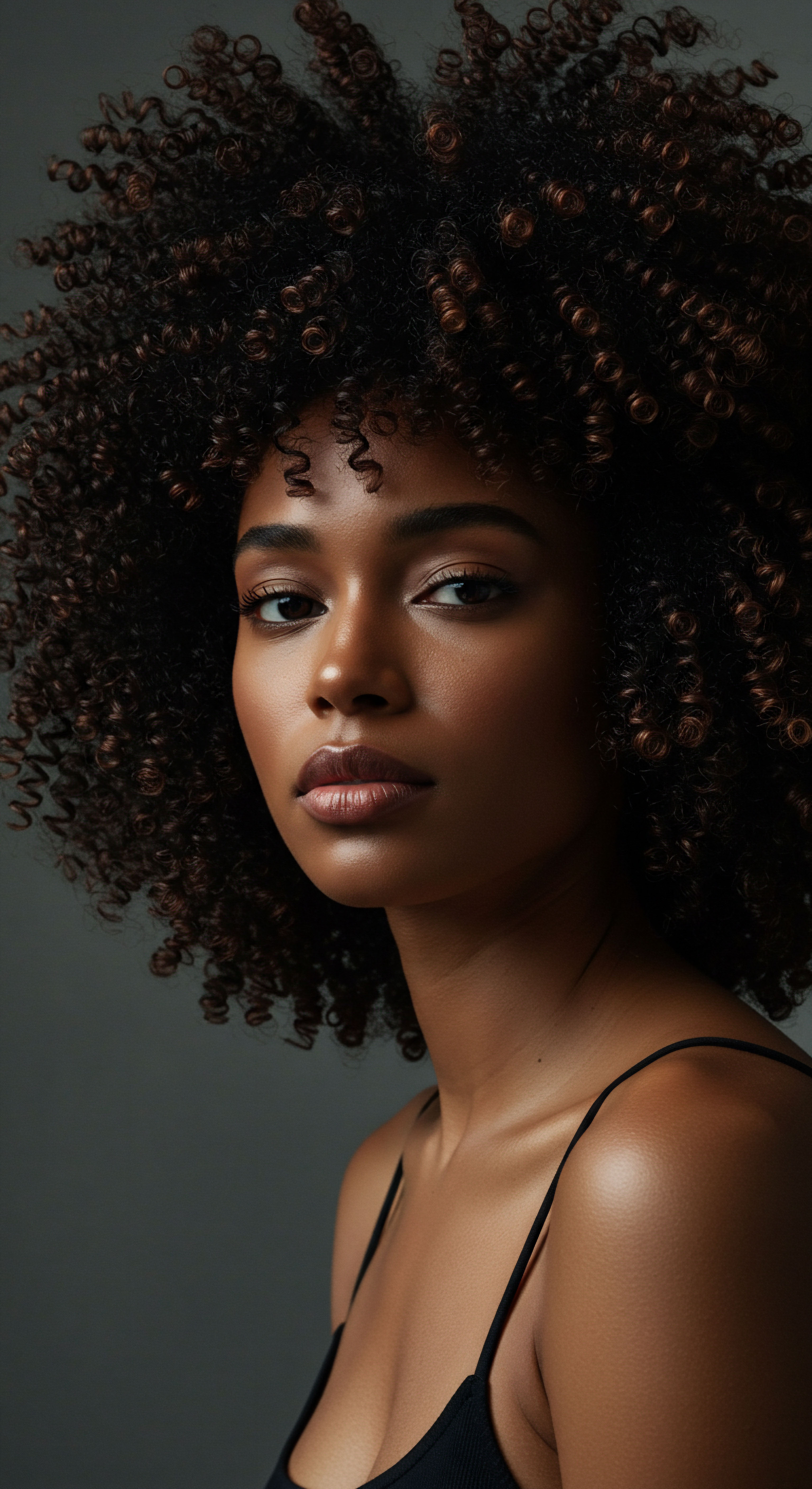
Ritual
Stepping beyond the foundational purpose of protection and hygiene, the ancient Egyptian wig became an instrument of daily ritual, a carefully chosen element that shaped one’s public persona and participation in the social sphere. The donning of a wig was a deliberate act, a step in presenting oneself to the world, much like selecting a garment for a specific occasion. It spoke to a societal understanding that outward appearance was deeply intertwined with inner order and the collective well-being.

The Art of Wig Crafting and Its Value
The making of a wig was an art form, a specialized trade demanding immense skill and time. Wigmakers, with their deft hands, transformed raw materials into sculptural headpieces. This meticulous process highlights the significant investment, not just in resources but in human labor, that went into each creation.
Consider the reconstruction of an ancient Egyptian wig by modern experts; one notable endeavor required a professional hairstylist and wigmaker approximately 200 Hours to complete, a testament to the original artisans’ dedication and the sheer complexity of these pieces. This extended period of creation underscores the high value placed on these items, marking them as true symbols of wealth and social standing.
Beyond their initial creation, wigs required ongoing attention. Unlike natural hair, they were not washed with water. Instead, they were refreshed and perfumed with scented oils, fragrant resins, and sometimes even aromatic cones placed atop the head, which would slowly melt and release their aroma throughout an event.
This ritual of scenting ensured the wearer carried an aura of cleanliness and luxury, fitting for the elite who regularly sported these elaborate headpieces. The preservation of such pieces in tombs further confirms their status as cherished possessions, deemed essential for an idealized existence beyond life.
Wig creation was a labor-intensive art, with some reconstructions requiring hundreds of hours, reflecting their immense societal value.
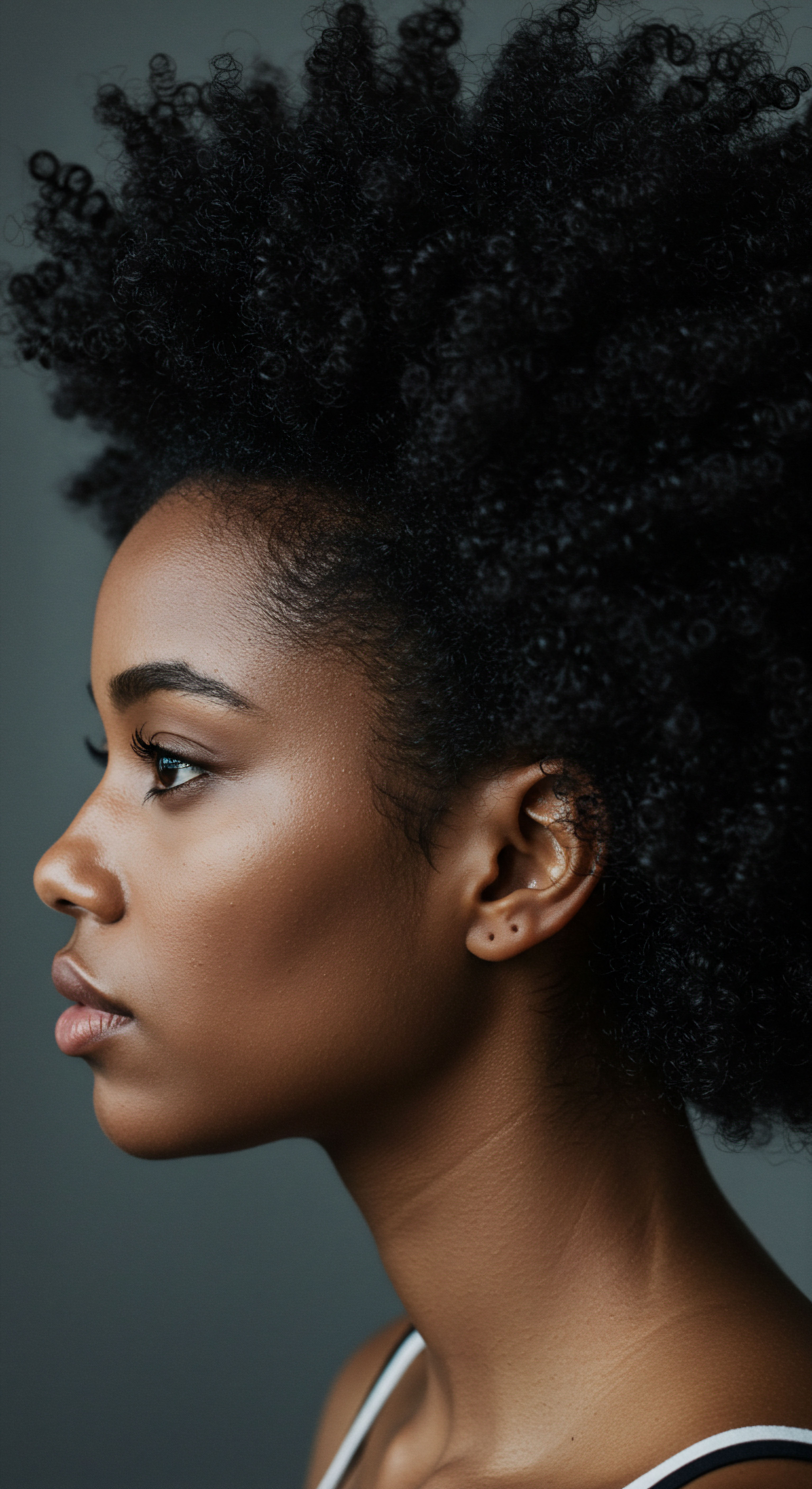
Wig Access and Social Divisions
Access to wigs was a clear marker of social hierarchy. While the concept of a styled headpiece was widespread, the quality, material, and intricacy of the wig directly corresponded to one’s position. The most opulent examples, crafted entirely from human hair, were reserved for the highest echelons of society.
An accounts list from the ancient town of Kahun remarkably placed the value of human hair in the same category as gold, underscoring its scarcity and desirability as a commodity. This economic reality meant that not everyone could partake in the full splendor of wig fashion.
Indeed, strict societal norms dictated who could and could not wear these symbols of refinement.
- Children ❉ Generally wore their natural hair short or shaved, often with a distinctive ‘sidelock of youth’.
- Priests ❉ Maintained shaved heads for ritual purity, often abstaining from wigs during their duties.
- Slaves and Servants ❉ Were legally prohibited from wearing wigs and were also not permitted to shave their heads, a stark visual contrast to their elite counterparts.
This deliberate restriction of wig wearing to the elite reinforced social boundaries, making the wig a silent yet powerful declaration of status and freedom within the ancient Egyptian world. The sheer volume of wigs owned could also signify standing; individuals of higher rank often possessed multiple headpieces for various occasions, each designed to convey a specific message of prosperity and good taste.
| Material Type Human Hair |
| Associated Social Class Elite, Royalty |
| Typical Cost Highest (comparable to gold) |
| Material Type Human Hair & Plant Fibers |
| Associated Social Class Middle Class |
| Typical Cost Moderate |
| Material Type Plant Fibers / Sheep's Wool |
| Associated Social Class Lower-Middle Class |
| Typical Cost Lowest |
| Material Type The choice of wig material directly reflected an individual's economic standing. |
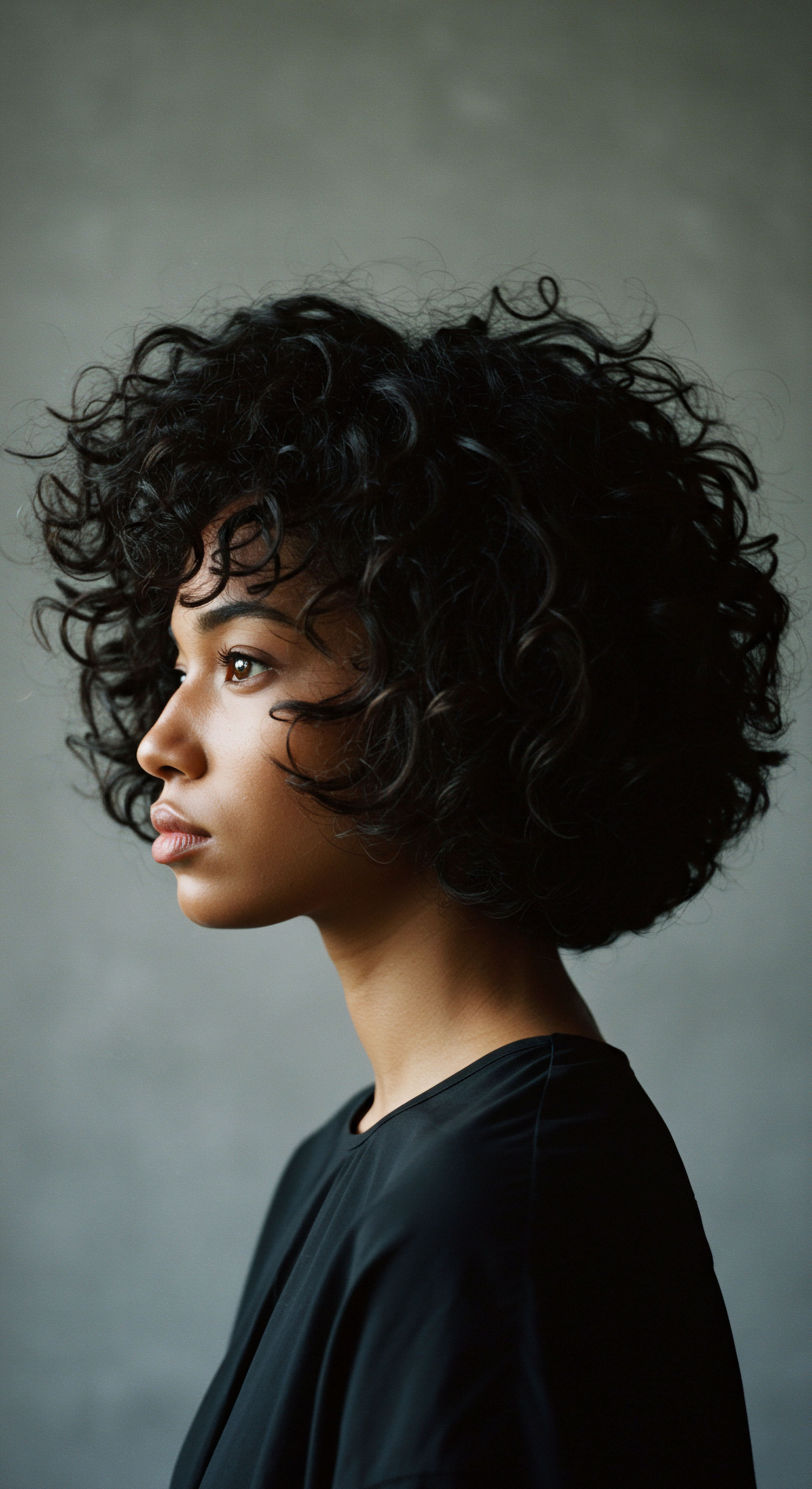
Relay
To truly appreciate the visual language of ancient Egypt, one must consider how the wig, a ubiquitous element of personal presentation, articulated distinctions between men and women. The differences extended beyond mere length or volume; they were steeped in cultural symbolism, societal roles, and evolving aesthetic ideals. Understanding these distinctions allows for a deeper appreciation of gender expression in a civilization thousands of years removed from our own.
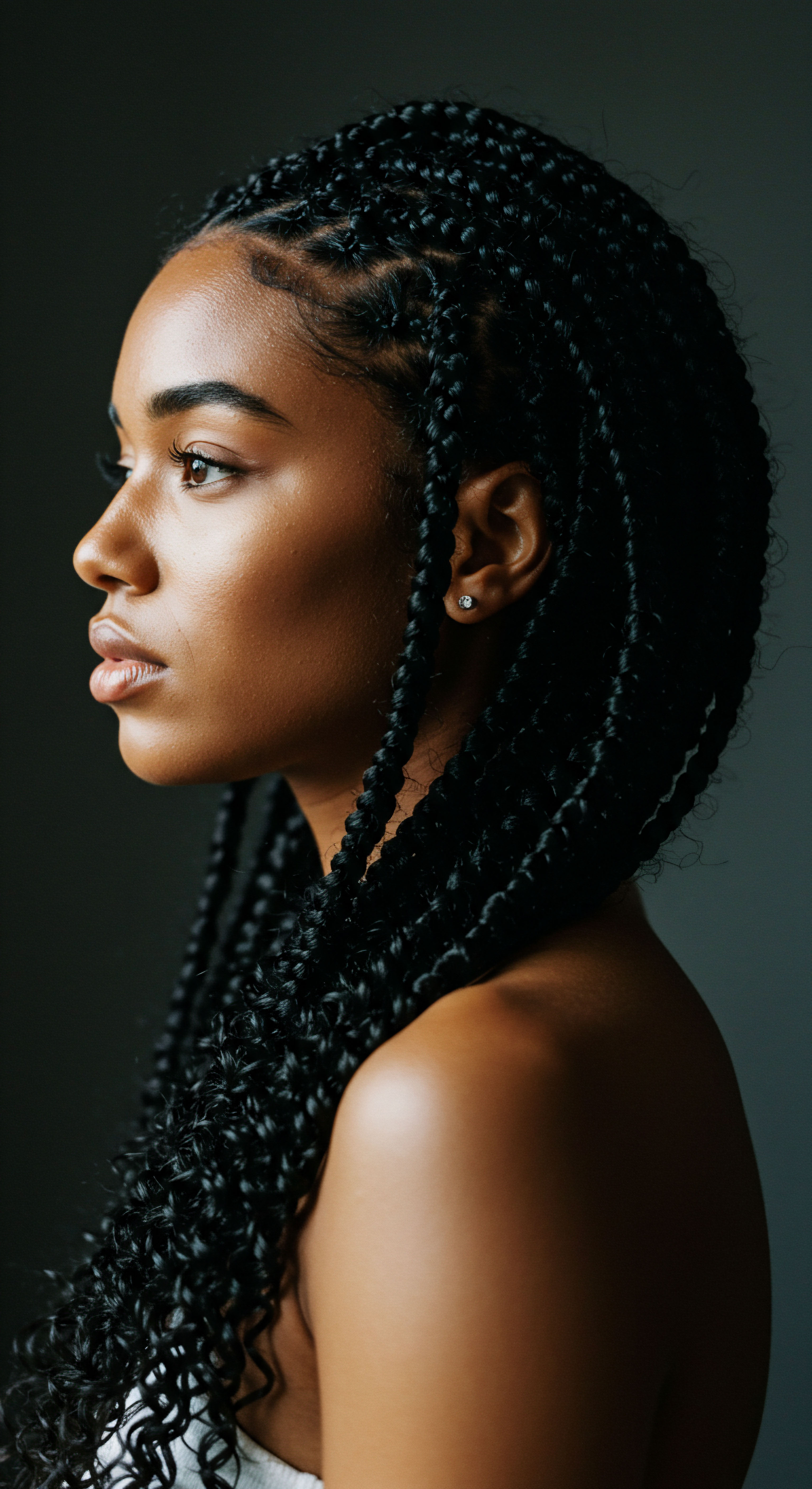
How Did Wig Styles Express Gendered Roles and Ideals?
The most immediate distinction in wig styles between men and women often centered on length and overall mass. Women’s wigs tended to be longer, often cascading to the shoulders or even breast level, conveying a sense of fertility and maturity. These styles frequently featured multiple narrow plaits, twists, or crimped tresses, sometimes arranged in a voluminous, full form that covered much of the upper body. A particularly noteworthy style for women was the Tripartite Wig, where sections of hair were arranged down the back and over each shoulder.
Art historian Gay Robins suggests this specific style may have marked a particular stage in a young woman’s life, signaling a transition from childhood to a period of potential marriage, without yet being married. This highlights how hair served as a public marker of life stages and social readiness.
Men’s wigs, while sometimes equally elaborate, typically favored shorter lengths, often above shoulder level, with a focus on structured curls or tightly arranged plaits. Elite men might sport what some refer to as “double-decker” wigs, featuring layers of artificially curled hair over braids, presenting an imposing and formal appearance. This structured aesthetic often conveyed authority and a disciplined presence. While some historical accounts, like those of Joann Fletcher, have suggested women’s wigs were structurally less complex than men’s, implying men wore their most intricate pieces for very special occasions, the archaeological record presents a rich variety for both, suggesting the true difference lay in the type of complexity and the messages they conveyed.

What Stylistic Elements Distinguished Men’s and Women’s Wigs?
Beyond general shape, specific stylistic elements and adornments further differentiated male and female wig fashion. Women’s wigs were frequently embellished with a wider array of accessories. This could include golden tubes slipped onto individual tresses, delicate jewelry chains, glittering pins, ribbons woven through plaits, tassels, and even fresh flowers or elaborate tiaras. The wig of Merit, wife of the foreman Kha from Deir el-Medina, stands as a testament to the elegance of women’s wigs for the non-royal elite.
Discovered in its protective wooden shrine-shaped box, Merit’s wig, made of human hair with a thick, tousled appearance and a central parting, shows the detailed care and ornamentation applied to these personal items, even down to tips coated in plant oil or balsam. Such finds provide tangible insight into the lived experiences of women of a certain standing, showing that even outside of royal circles, wigs were objects of beauty and personal expression.
Men’s wigs, while less overtly adorned with glittering trinkets, held their own forms of symbolic ornamentation. The pharaohs, both male and female (such as Queen Hatshepsut), famously wore false beards, often braided and tightly knotted, hooked behind the ears. This Beard Wig was not a sign of masculinity but a profound symbol of divinity and royal authority, connecting the ruler to the gods.
This particular accessory served a ceremonial and religious function, transcending common gendered fashion. Additionally, the color of wigs could vary, with deep black being prevalent, but blond wigs were also produced, and Queen Nefertiti herself was known for her preference for dark blue wigs, demonstrating individual expression within the established norms.
The evolution of styles across different periods also introduced variations. During the Old Kingdom, both genders favored shorter, often straight or tightly curled wigs. The Middle Kingdom saw the rise of bob-length styles for women and longer, more voluminous options, while men’s wigs remained generally shorter but could feature bangs and more defined curls. The New Kingdom brought an era of even greater elaboration, with women’s wigs becoming bulkier and more decorated, and men’s styles becoming more complex, sometimes longer in the front.
The Amarna period, under Akhenaten and Nefertiti, briefly saw a shift towards simpler, shorter styles, including the distinctive Nubian Wig, which mimicked the short, curly hair of Nubian peoples and was notably adopted by royal women. This historical progression illustrates that while core gender distinctions persisted, fashion, cultural exchange, and individual taste always found avenues for expression.
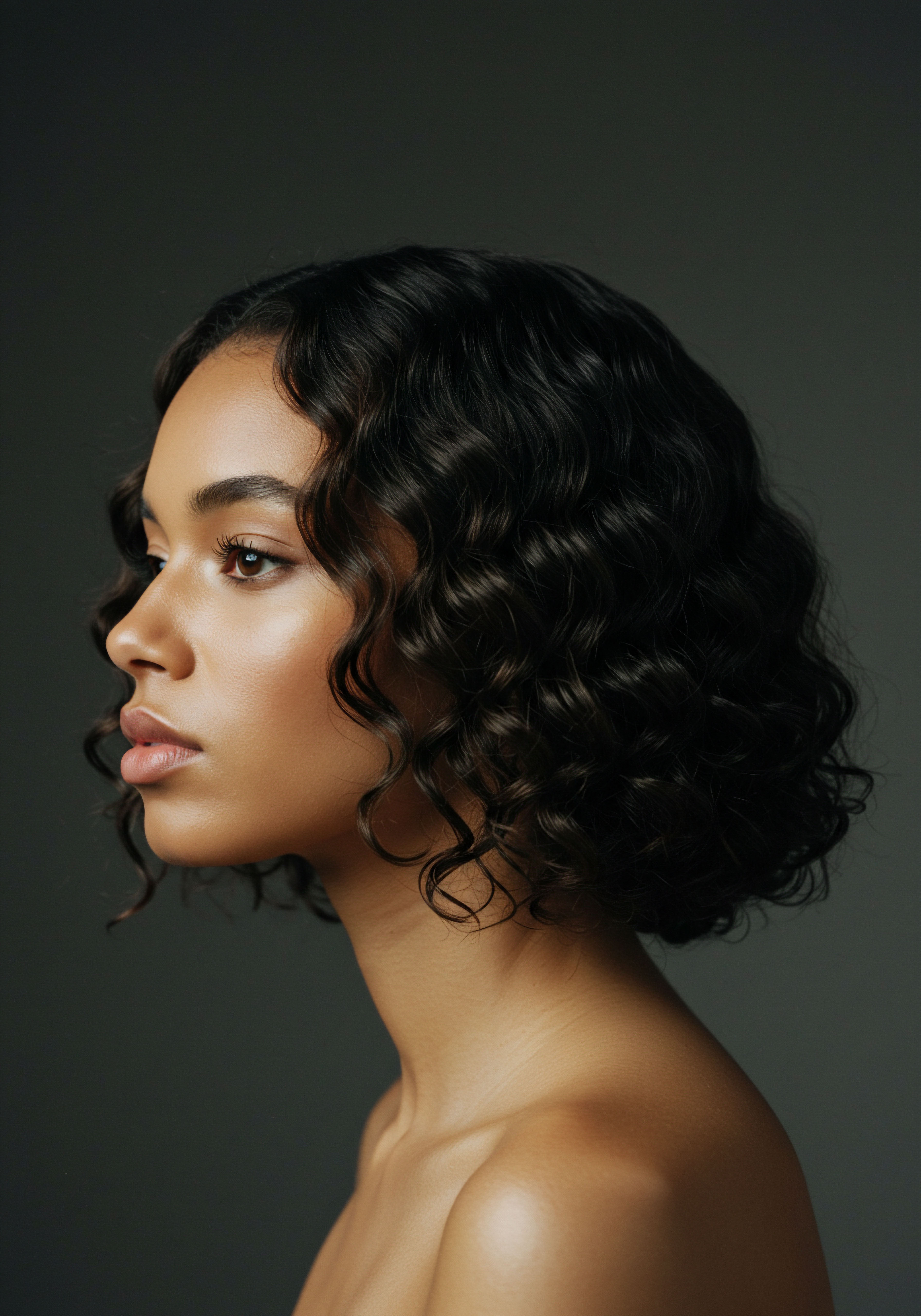
Reflection
The ancient Egyptian wig, in its varied forms and functions, offers a compelling window into a society that understood deeply the language of appearance. It speaks to a universal human inclination to adorn, to protect, and to signify. From the practical needs of hygiene and sun protection to the profound expressions of status, gender, and spiritual connection, these crafted headpieces were far more than simple accessories. They were integral to daily life, ritual practice, and the very construction of identity within a civilization that left an indelible mark on history.
The dedication to their creation, the materials chosen, and the specific styles adopted by men and women alike, all tell a story of intentionality and meaning. In observing these ancient customs, we find echoes of our own desires for self-expression and belonging, a timeless conversation across millennia about who we are and how we present ourselves to the world.
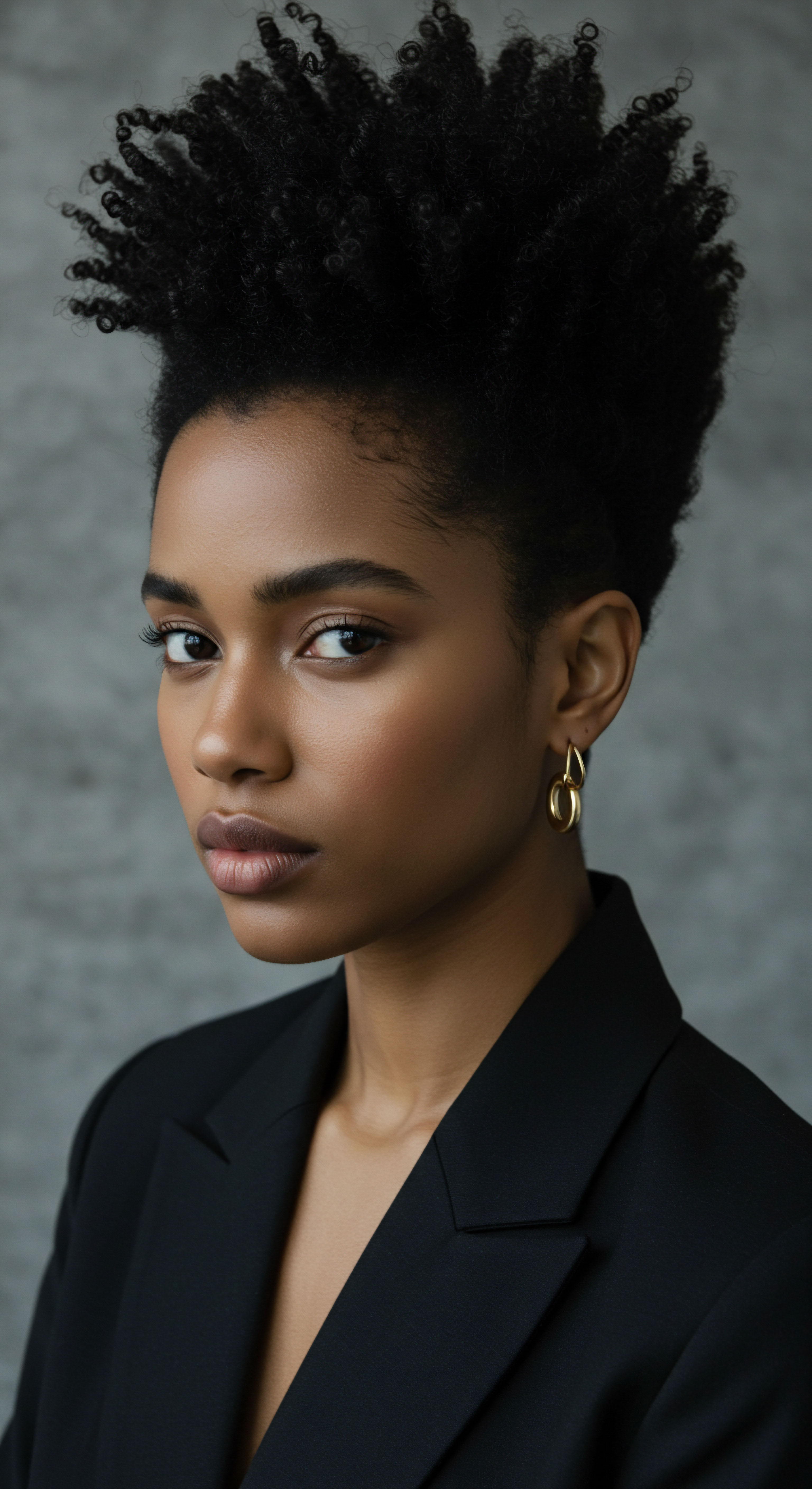
References
- Fletcher, Joann. 1994. ‘Ancient Egyptian Hair and Wigs’. The Journal of Egyptian Archaeology 80 ❉ 171-180.
- Fletcher, Joann. 1995. ‘Ancient Egyptian Hair ❉ A Study of its Production, Management and Social Significance’. PhD thesis, University of Manchester.
- Fletcher, Joann and Filippo Salamone. 2016. ‘An Ancient Egyptian Wig ❉ Construction and Reconstruction’. Internet Archaeology 42.
- Lucas, Alfred. 1930. ‘Ancient Egyptian Wigs’. Annales du Service des Antiquités de l’Égypte 30 ❉ 190-196.
- Robins, Gay. 2020. ‘Hair, Gender, and Social Status in Ancient Egypt’. JSTOR Daily.
- Strudwick, Nigel. 2006. Masterpieces of Ancient Egypt. London ❉ British Museum Press.
- Taylor, John H. and Daniel Antoine. 2014. Ancient Lives, New Discoveries. London ❉ British Museum Press.
- Tassie, Geoffrey J. 2002. ‘The Social and Ritual Contextualisation of Ancient Egyptian Hair and Hairstyles from the Protodynastic to the End of the Old Kingdom’. PhD thesis, University College London.